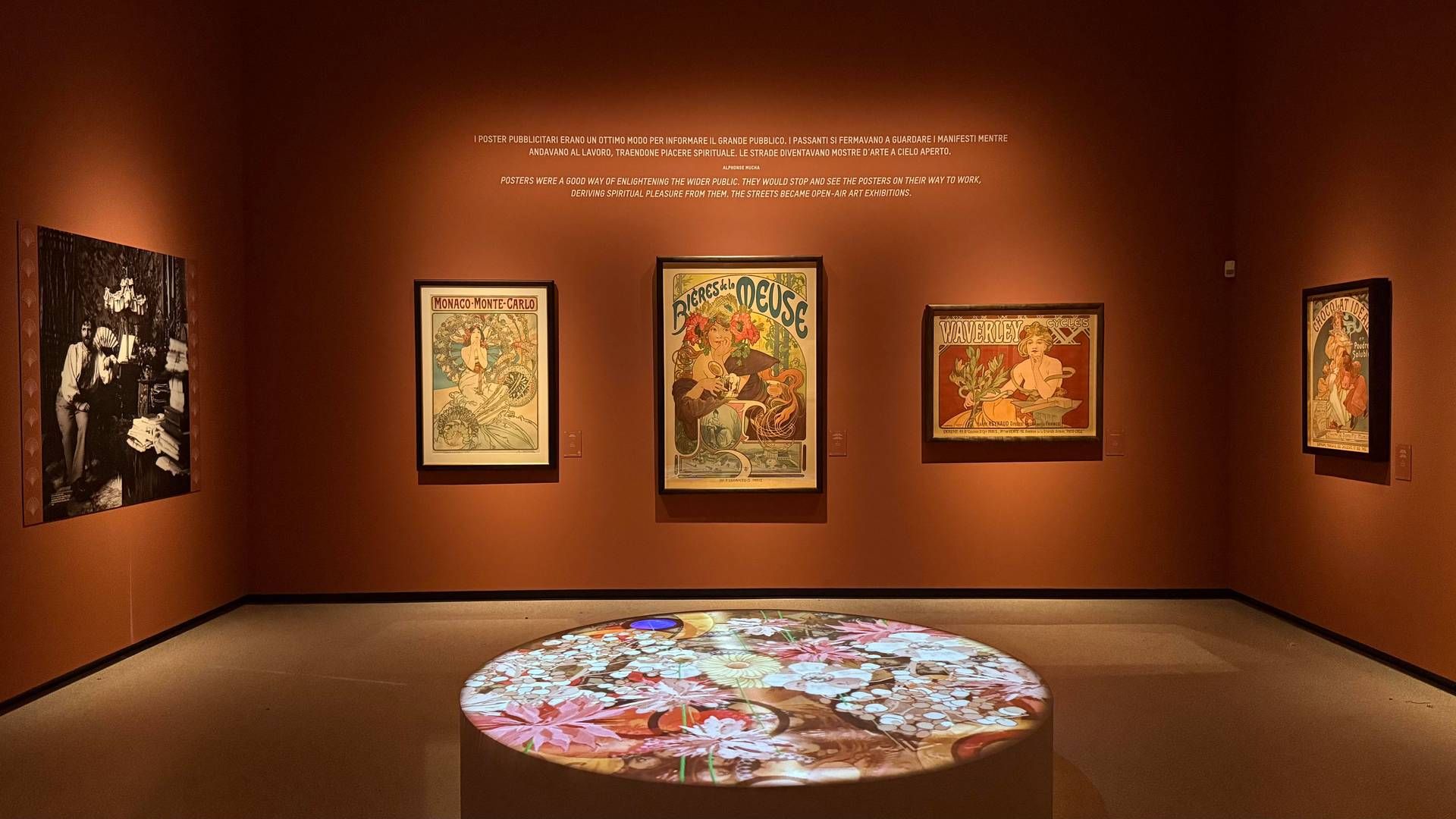At Palazzo dei Diamanti of Ferrara, from March 22 to 20 July 2025, two exhibitions open to the public: a monographic on Alphonse Mucha, one of the fathers of Art Nouveau, in the eleven rooms of the Rossetti Ala, and an exhibition-dossier on Giovanni Boldini, dedicated to the theme of the female portrait, in the three rooms of the Tisi wing.
Both the Czech Alphonse Mucha (Ivančice, 1860 – Prague, 1939), and the Ferrarese Giovanni Boldini (Ferrara, 1842 – Paris, 1931) affirmed themselves in the Paris of the Belle Époque obtaining an international success. Mucha arrived in the French capital in the autumn of 1887, when the Ferrarese was already very famous and was maturing the intention of dedicating itself mainly to the genre of the portrait. Mucha certainly admired Boldini’s works present at the Universal Exposition of Paris in 1900, where he was in turn involved in exhibitions and projects, including the decoration of the Bosnia-Herzegovina pavilion commissioned by the Austrian government. Both were extraordinary singers of the beauty and charm of the woman and managed to give shape, each in their own way, to the female ideal of the time, presenting us attractive and seductive figures, elegant and energetic, emancipated and master of his own destiny.
The retrospective tells the biography, the artistic path and the multiple aspects of the production of Alphonse Mucha, who, born in 1860 in the small Morava city of Ivančice, reached international fame in Paris Fin de Siècle thanks to the posters for the theatrical performances of the famous actress Sarah Bernhardt and decorative panels depicting attractive and refined women. These works soon became emblematic of the nascent Art Nouveau, to whose statement contributed by developing an unmistakable and seductive style, immediately renamed “Le Style Mucha”. When the Universal Exhibition of Paris was inaugurated in 1900, the Czech graphic graph was already considered one of the prominent figures of this new artistic movement. In 1904 he visited the United States for the first time and the press called him “the greatest decorative artist in the world”. Although it is known mainly for the posters performed in the Ville Lumiere, Mucha was extraordinarily multifaceted and versatile: as well as an illustrator, graphic designer and painter, he was also a photographer, scenographer, interior designer, jewelry creator, packaging designer. He was also a brilliant teacher, a philosopher and a political thinker: he was convinced that the beauty and inspiring strength of art could favor the progress of humanity and peace; Furthermore, he firmly believed in the independence of his homeland from the Habsburg Empire and he was able to express forcefully the dream of unity of the Slavic peoples.
The exhibition of Palazzo dei Diamanti illustrates through about 150 works – including paintings, drawings, photographs, posters, objects – the entire biographical and artistic story of Mucha: from the decisive meeting in Paris with the “Divine Sarah” to the affirmation of its language through the advertising posters; From the projects on the occasion of the Universal Exhibition of Paris of 1900 to stays in the United States, up to the production of mature years spent in Czechoslovakia, where he returned in 1910 with the aim of putting his art at the service of the country, especially through the creation of the monumental cycle of paintings of the Slavic epic, his indisputable masterpiece.
The exhibition, with the patronage of the Emilia-Romagna Region, is organized by the Ferrara Arte Foundation, Art Museums Service of the Municipality of Ferrara and Arthemisia, in collaboration with the Mucha Foundation and is curated by Tomoko Sato with the scientific coordination of Francesca Villanti.
In the rooms of the Tisi Diamanti Palace, over 40 works by Giovanni Boldini – including oil paintings, pastels, watercolors, drawings and engravings – selected from those kept in the museum named after him tell his talent as a painter of the “modern woman” and her charm. The exhibition deepens, in fact, the theme of the female portrait, to which the Ferrarese painter dedicated himself in an almost exclusive way, and successfully, in Paris fin de Siècle. Highly sought by a wealthy international clientele, Boldini was able to return, like few others, the alive concreteness, character and status of his models, which he delivered to history as an icons of an era. The public and the criticism, in Europe as in America, mainly appreciated the innovative stylistic formula with which it gave form to the female ideal of the time: elegant, barely, caught, emancipated, restless, sometimes eccentric. This is demonstrated by the full -figure portraits for which it became famous all over the world, such as those of Countess Berthier de Leusse, of the princess Eulalia of Spain, of the mysterious protagonist of firework, and Olivia Concha de Fretecilla, called the lady in the squad. Next to these masterpieces, characterized by that peculiar rapid writing and together controlled which makes its style unmistakable and unique, there will be other half -lecture specimens with a pastel and pastel, two extraordinary portraits of Boldini (the bronze made by Vincenzo Gemito and the famous self -portrait at sixty -nine years), some interiors of the atelier, a kind with a strong autobiographical value, which Other works, vital and vibrant, conceived as studies, including the snappy nudino and the canvas entitled Nymphs in the moonlight. A selection of drawings that demonstrate its hyperactive relationship with the surrounding reality and a series of admirable engravings that document a very significant but less known but less known production. The exhibition, curated by Pietro Di Natale, is organized by the Ferrara Arte and Art Museums Foundation of the Municipality of Ferrara. The catalog is published by Fondazione Ferrara Arte Editore.
